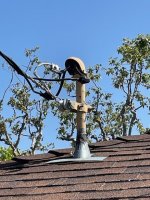mtnelect
HVAC & Electrical Contractor
- Location
- Southern California
- Occupation
- Contractor, C10 & C20 - Semi Retired
Because of this arrangement, doesn't the home(s) service take the brunt of any fault caused by the utility ?Right because the messenger is the grounded/neutral conductor. Perhaps I'm not understanding what you are asking?
Last edited:


